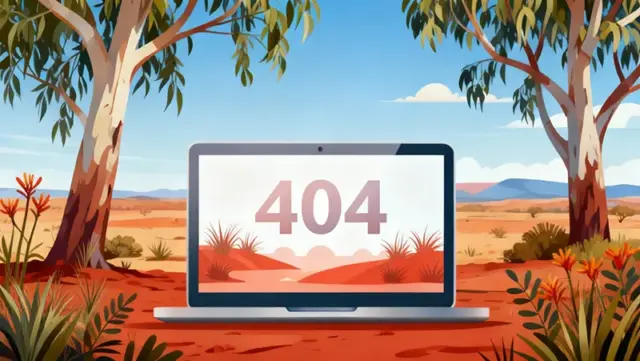So you’ve just launched your new website. It looks great, everything works, you’re happy with it. Done, right?
Not quite.
I’ve lost count of how many times I’ve been contacted by a business owner who built a website five or six years ago and hasn’t touched it since. Now they’re wondering why it’s not working for them anymore, why they’re not getting enquiries, why people keep telling them it looks outdated, or why their contact form is throwing errors and they’re missing leads.
Here’s the thing most people don’t realise when they invest in a new website: it’s not a one-and-done project. Your website needs ongoing attention to keep working properly for your business.
Let me explain why.
Your business changes
This is probably the most obvious one, but it’s surprising how often it gets overlooked.
When you first built your website, maybe you were offering three services. Now you’re offering five, and you’ve stopped doing one of the original three. But your website still lists all the old services because no one’s updated it.
Or you’ve changed your pricing structure. Or you’ve moved offices. Or you’ve hired new staff. Or you’ve won some awards. Or you’ve got new testimonials from happy clients.
Your website should reflect where your business is now, not where it was when you launched the site. If your social media is saying one thing and your website is saying something else, that’s confusing for potential customers.
Technology doesn’t stand still
The web moves fast. Really fast.
WordPress (which most business websites run on) releases updates regularly. These aren’t just adding new features, they’re fixing security issues and making sure everything keeps working properly with new web browsers and devices.
If you don’t keep your website updated, a few things happen. It becomes vulnerable to security problems. It might start breaking in new browsers. It gets slower. Forms might stop working. And eventually, something will go wrong at the worst possible time.
I’m not saying you need to be checking for updates every day. But ignoring them completely for years? That’s asking for trouble.
How people use websites keeps changing
Remember when everyone was accessing websites on desktop computers? Then smartphones came along and changed everything. Now most people are browsing on their phones.
But it’s not just about mobile responsiveness anymore. People’s expectations keep evolving. They want faster loading times. They want easier ways to contact you. They expect certain features that didn’t exist five years ago.
A website that was perfectly good in 2018 might feel clunky and outdated in 2024, even if the visual design still looks fine. User behaviour changes, and websites need to keep up.
Google keeps moving the goalposts (and now there’s AI too)
Google updates its search algorithms constantly. What helped your website rank well two years ago might not work as well today.
And now AI has thrown another spanner in the works. More people are using ChatGPT or Google’s AI features to find quick answers instead of scrolling through traditional search results. The way people look for information is changing.
I’m not saying you need to panic about every algorithm update or AI development. But if you want your website to keep showing up when people are looking for your services, you need to pay some attention to how search is changing. Keep your content relevant, make sure your technical SEO is working properly, and have clear information that actually answers what your customers want to know.
A static website can still work fine if your information is accurate and useful. The bigger risk is that competitors with more current, detailed content might start outranking you, or that outdated information on your site starts turning potential customers away.
Security threats evolve
This is less exciting to think about than design and content, but it’s important.
If your website runs on WordPress (which most business websites do), it needs regular updates. That means updating WordPress itself, plus all the plugins and themes your site uses. These updates aren’t just adding new features – they’re fixing security vulnerabilities that hackers could exploit.
When you ignore these updates for months or years, your website becomes an easy target. Hackers find vulnerabilities in outdated WordPress versions or old plugins, and they exploit them. You might not even know your site’s been compromised until customers start telling you it’s displaying spam or your hosting provider shuts it down.
Dealing with a hacked website is a nightmare. It’s expensive, time-consuming, and stressful. Much easier to just keep things updated.
So what does this mean for you?
Before you start worrying that you need to be working on your website every day, let me explain what ongoing maintenance actually looks like for most small businesses.
Regular updates: Someone needs to keep WordPress, themes, and plugins updated. This could be you, or you could pay someone to do it. Either way, it needs to happen regularly.
Content updates: When your business changes, update your website. New services, changed pricing, new location, updated contact details, fresh testimonials. This doesn’t need to be weekly, but it shouldn’t be never.
Occasional improvements: Every year or two, have a look at how your website is performing. Are people finding what they need? Is it still working well on new devices? Are there new features that would help your customers?
Security monitoring: Make sure someone’s keeping an eye on security and backups. You don’t want to find out you have a problem when it’s too late.
The occasional refresh: Every few years, you might need a more significant update or redesign. Not because websites “expire,” but because your business has grown and your website needs to grow with it.
The reality check
Most service-based businesses don’t need to be publishing new blog posts every week or constantly tweaking their design. That’s not what I’m talking about here.
But you also can’t just launch a website and completely forget about it for five years. That’s how you end up with outdated information, security problems, and a site that doesn’t represent your business properly anymore.
Think of your website like your shopfront. You wouldn’t open a physical shop and then never clean it, never update the window display, never fix anything when it breaks, and never change the products you’re advertising. Your website needs the same kind of ongoing attention.
The good news is that it doesn’t have to be complicated or time-consuming. A bit of regular maintenance goes a long way.
Getting help with ongoing maintenance
Not everyone wants to handle their own website updates, and that’s completely fine.
Some web designers (including me) offer ongoing maintenance packages. Others expect you to handle updates yourself or bring in help when you need it. The important thing is having a plan rather than just hoping nothing goes wrong.
If you’re comfortable with technology, you might be fine handling basic content updates yourself. But for things like security updates, technical troubleshooting, and bigger improvements, it’s worth having someone you can call who knows what they’re doing.
The worst situation is when something breaks and you have no idea who to contact or how to fix it. Plan ahead.
Final thoughts
Your website launch isn’t the finish line. It’s the starting line.
A website that works well for your business today needs attention to keep working well tomorrow. That doesn’t mean constant work, but it does mean regular check-ins and updates.
The businesses I’ve worked with who get the best results from their websites are the ones who treat them as an ongoing part of their marketing, not a project they completed once and forgot about.
So if you launched your website and haven’t touched it since, maybe now’s a good time to schedule a review. Update that outdated content, check those security updates, and make sure your website is still doing its job properly.
Need help with website maintenance? Whether you need someone to handle regular updates or just want to talk through what your website needs to stay current, I’d be happy to chat. After 15+ years of web design, I’ve seen every possible maintenance scenario and can help you figure out a plan that works for your business.

